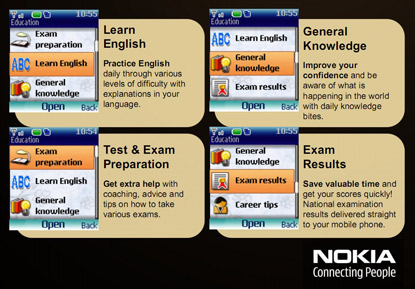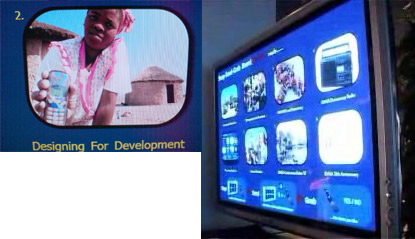Mobile devices are the primary experience of personal computing for most people in emerging markets. Accessing content at prices these users can afford is all but impossible. But using sideloading and sneakernet, content can spread for free.
I was lucky enough to watch a great talk by Gary Marsden at the recent SA UX meeting in Cape Town. He talked about many interesting things, but this one captured my imagination the most.
In developing markets, mobile devices have much greater market penetration the personal computers. In South Africa, for example, around 77% of the population have mobiles but only 12% get online with PCs. So for hundreds of millions worldwide, the main, everyday experience of digital technology is probably a phone. When a phone is one of the few pieces of technology you’ve got, it’s amazing what you will use it for. In emerging markets, mobile phones are becoming a primary mechanism for reading text, storing photo albums, watching video and listening to music.
Nokia has recently announced their $50 2323 phone, along with a suite of carefully targetted custom content to address this developing market demand.

But nearer the “bottom of the pyramid” the the cost of mobile data services is too much for most people to afford more than a trickle of bytes. Typical data consumption for a young South African might cost them around R7 per week, which is around 50 pence. Downloading MP3s or ebooks isn’t realistic. So instead, some content is percolating across the community using bluetooth sideloading and sneakernet.
Sideloading sneakernet
Sideloading is a newish term, still ill-defined. But one meaning is that people can share content from one mobile device to the next, rather than downloading it from network servers.
Sneakernets are a venerable concept, still used by even the largest companies when the cost of electronic data transfer is too high. It just means that you carry data from A to B on a storage medium, instead of sending it over a wire. Google, for example, used blocks of disks to transfer 120 terabyte files.
If you put the two together you can transfer data to mobile devices for free, across any distance. Basically, one person sends a piece of content to another using bluetooth. The recepient can share their copy with more friends, and from them it can go on to more. The potential rate of distribution grows exponentially.
Riding the sneakernet
With only 6.6 degrees of separation between everyone on the planet, it’s not hard to see that this could let content percolate quite fast. But our daily face to face contact is with far fewer people than our total network, so content will percolate more slowly, really.
Targetting connectors will help. The Tipping Point tells us that a few people in the world are connectors – they know a lot of people. To get a message out over a sneakernet, it would make sense to ensure it gets to the connectors.
In reality, it may be that most content won’t hop quickly or reliably enough from user to user for many applications. So providing physical severs in public spaces to allow bluetooth content downloads looks like a more controlled option.

To do just that, Gary Marsden’s team at the University of Cape Town, along with Microsoft Research have invented Big Board. It’s a digital message board that allows people with ordinary, bluetooth-enabled phones to download text, images, audio and video for free. Most important, it requires no extra software on the handset at all – most phones can already receive mutimedia messages via bluetooth.
What content is worth distributing? For big board, community and local content make sense. Big board can also allow content to be uploaded to it, making it true, digital message board. Education and entertainment also fit well, and are good sneakernet fuel too. I’ve heard plans for using soap opera mobisodes to provide health education and AIDS awareness messages…